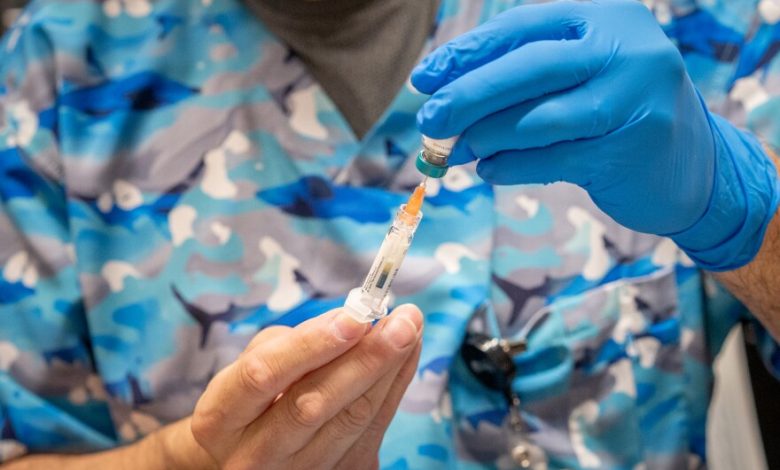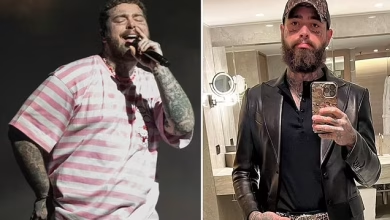Outbreak Alert: U.S. Measles Cases Continue to Climb — Is Your State Next?

The United States is facing a sharp and worrying rebound of measles in 2025. Once declared eliminated in 2000, measles — one of the most contagious diseases known to medicine — has returned with a force that public health officials say is both predictable and preventable. This article takes stock of where the outbreak stands, why cases are climbing, which communities and states are most at risk, and what you can do to protect yourself, your family and your community.
The numbers: a surge we haven’t seen in decades
So far this year the U.S. has recorded more than 1,500 confirmed measles cases across dozens of states, with the CDC reporting dozens of separate outbreaks and cases reported in more than 40 states and jurisdictions. The majority of infections have been linked to outbreak clusters and, critically, to unvaccinated people. Public health reporting shows that roughly nine out of ten measles patients are unvaccinated or have unknown vaccination status in the current wave.
These totals represent the highest annual case counts in decades and a dramatic rise compared with 2024. In the first months of 2025 alone, an outbreak concentrated in New Mexico, Oklahoma and Texas accounted for hundreds of cases and several hospitalizations and deaths. More outbreaks were added as the year progressed, reflecting measles’ ability to spread rapidly wherever there are pockets of low immunity.
Why now? Three factors fueling the comeback
There isn’t a single cause for this surge — it’s the result of a combination of trends that have created fertile ground for measles to spread.
- Declining vaccination coverage in pockets. After the COVID-19 pandemic, routine childhood immunization rates declined in many counties. Measles requires very high community immunity (typically ~95%) to prevent sustained transmission; even relatively small local drops in MMR (measles–mumps–rubella) coverage can allow an introduced case to ignite an outbreak. Recent analyses show measurable declines in county-level MMR coverage compared with pre-pandemic years.
- International importations. Measles remains common in many parts of the world; travel-associated importations can seed outbreaks in the U.S. If a community has low vaccination coverage, a single imported case can produce many secondary infections. Global measles activity has been elevated in recent years, increasing the chance of importations.
- Misinformation and policy shifts. Vaccine hesitancy fueled by misinformation and, in some places, changes in policy or weakened enforcement of school vaccine requirements have left gaps in protection. In a year when public health agencies are also experiencing organizational stress and staffing changes, the response can be hampered. Recent reporting about disruptions and personnel issues at federal agencies has raised concerns among epidemiologists about sustaining outbreak response capacity.
Who is being hit hardest?
The current outbreaks have tended to affect young children and close-knit communities with low vaccination rates. A substantial share of hospitalizations are among children under five, and tragically, there have been pediatric deaths in outbreak-affected areas where parents reported their children were unvaccinated. Some outbreaks have centered in rural or tight-knit social groups where immunization coverage is low, which allows measles to spread easily from house to house, school to school, or within places of worship.
Health officials also note that healthcare workers, pregnant people, and immunocompromised individuals are at special risk of severe disease and complications if exposed — making vaccination and strong infection control measures in clinics and hospitals critical.
Which states are most affected — and is your state next?
By late 2025 reports placed measles cases in more than 40 states and jurisdictions, and dozens of outbreaks had been confirmed. States with larger reported outbreaks this year included Texas (notably a large West Texas outbreak with hundreds of cases), New Mexico, Oklahoma and others. But the reality of measles is that the virus does not respect state borders — anywhere with pockets of undervaccination is vulnerable.
That means the question “Is your state next?” is less about state lines and more about local coverage: if your county or school district has MMR coverage below the threshold needed for herd immunity, your local area could be at risk. The best way to assess local risk is to check your state or local health department’s vaccine coverage data and outbreak alerts.
What does measles look like — and why is it dangerous?
Measles usually begins with high fever, runny nose, cough, red eyes (conjunctivitis), and then a distinctive maculopapular rash that spreads from the face downward. But the illness can be severe: about 1 in 5 infected children are hospitalized, complications include pneumonia and encephalitis (brain inflammation), and the disease can be fatal in a small proportion of cases — particularly in very young children and people with weakened immune systems. These are not abstract risks; the recent outbreaks have produced hospitalizations and fatalities.
Vaccination: the single most effective defense
The MMR vaccine is proven, safe, and highly effective. Two doses provide about 97% protection against measles. Given how contagious measles is — an infected person can infect 12–18 others in a susceptible population — high coverage is essential. If you or your child have not received the MMR vaccine, or you are unsure of your vaccination status, public health guidance strongly recommends checking with your healthcare provider and getting vaccinated. For adults without documentation of two doses, at least one dose is typically recommended; certain adults at higher risk may be advised to receive two.
In outbreak situations public health departments sometimes advise accelerated vaccination schedules (for example, giving the first MMR dose earlier than usual to infants traveling to outbreak areas) or offering MMR clinics to rapidly raise community immunity.
If you’re exposed: what to do
If you’ve been exposed to a confirmed measles case, steps depend on your vaccination and immune status:
- If you’ve had two documented MMR doses or previous confirmed measles infection, you’re likely protected.
- If you have no evidence of immunity and it has been less than 72 hours since exposure, getting an MMR dose may still provide some protection or reduce disease severity.
- Immunoglobulin (passive antibody treatment) given within six days of exposure can reduce the risk of severe disease for certain high-risk people (infants, pregnant people, immunocompromised persons).
- If exposure is suspected, contact your local health department or healthcare provider immediately for instructions — do not go to a clinic or emergency room without calling first, to avoid exposing others.
Schools, employers and community measures
Because schools are common places for spread, many jurisdictions are increasing verification of student vaccination records and rapidly excluding unvaccinated students from school during outbreaks. Employers in healthcare and childcare settings may require proof of immunity (either vaccination records or lab evidence). Community leaders and religious institutions often play a key role in communicating about vaccination in culturally appropriate ways — and in some outbreak responses, targeted vaccination drives have successfully halted transmission.
Myths and misinformation — what the evidence says
Measles vaccine safety myths persist despite robust evidence to the contrary. Long-term, well-powered studies have repeatedly shown no link between MMR vaccination and autism. The vaccine’s safety profile is excellent; adverse events are rare, and the risks from measles infection far outweigh the very small risks from vaccine side effects. During outbreaks, every unvaccinated person becomes a potential link in a chain of transmission that can lead to severe outcomes for others, including infants too young to be vaccinated and immunocompromised individuals.
Beware of social-media posts that cherry-pick rare events or spread misinformation about vaccine ingredients or conspiracies. Trust reputable, evidence-based sources such as your state health department, the CDC, and pediatric or infectious disease specialists.
Policy implications and public-health capacity
The scale of these outbreaks has raised policy questions about vaccine exemptions, school-entry requirements, and the resources available to respond. Some public health experts have called for stricter enforcement of school vaccination laws and better resourcing for immunization programs. At the federal level, reporting in October 2025 about personnel disruptions and organizational strain at public health agencies has fueled concern that outbreak response capacity could be weakened at a critical moment. Strong surveillance, laboratory capacity, and field investigation teams are essential for rapid containment.
Practical checklist: Protecting yourself and your community
- Check vaccination records. Confirm that you and your children are up to date with the MMR series. If you don’t have written proof, ask your healthcare provider or local health department about records or serologic testing.
- Get vaccinated if needed. If you lack evidence of immunity, get at least one MMR dose. During active outbreaks, vaccination clinics are often set up for rapid access.
- Watch for symptoms after travel. If you’ve travelled internationally or been in contact with groups where measles is circulating, monitor for fever, cough, runny nose, red eyes, or rash — and call before visiting a healthcare facility.
- Protect vulnerable people. If you care for infants under 12 months, pregnant people, or immunocompromised individuals, make sure everyone around them is immune to reduce risk of exposing these high-risk people.
- Follow local health alerts. Public health departments will post outbreak updates, school exclusion rules, and vaccination clinic information. These are the best sources for action in your community.
What scientists and clinicians are watching next
Epidemiologists will be monitoring whether current outbreak clusters spread to new communities and whether vaccination campaigns can close immunity gaps quickly enough to stop transmission. Modeling studies and surveillance data will also be used to identify counties or schools with dangerously low MMR coverage — those are the places where an imported case is most likely to spark more infections. The collaboration of clinicians, public health officials, schools, and community leaders will determine whether this wave is controlled or continues into the next year.
Final word: measles is preventable — action matters
Measles is not a disease we need to accept as inevitable in the United States. The tools to prevent it — safe, effective vaccines and public-health infrastructure to deliver them — already exist. But they must be used: high vaccination coverage, timely outbreak response, clear communication, and adequate public-health capacity are non-negotiable if we want to keep measles from spreading. If you live in a state where cases have been reported or in an area with low vaccination coverage, now is the moment to check your immunity and act.
If there’s one takeaway, it’s this: measles can come to your community, but it doesn’t have to stay. Getting vaccinated protects you and those who cannot be vaccinated, and rapid public-health action can stop chains of transmission. For the latest updates and state-level guidance, consult your state health department and the CDC’s measles pages.




